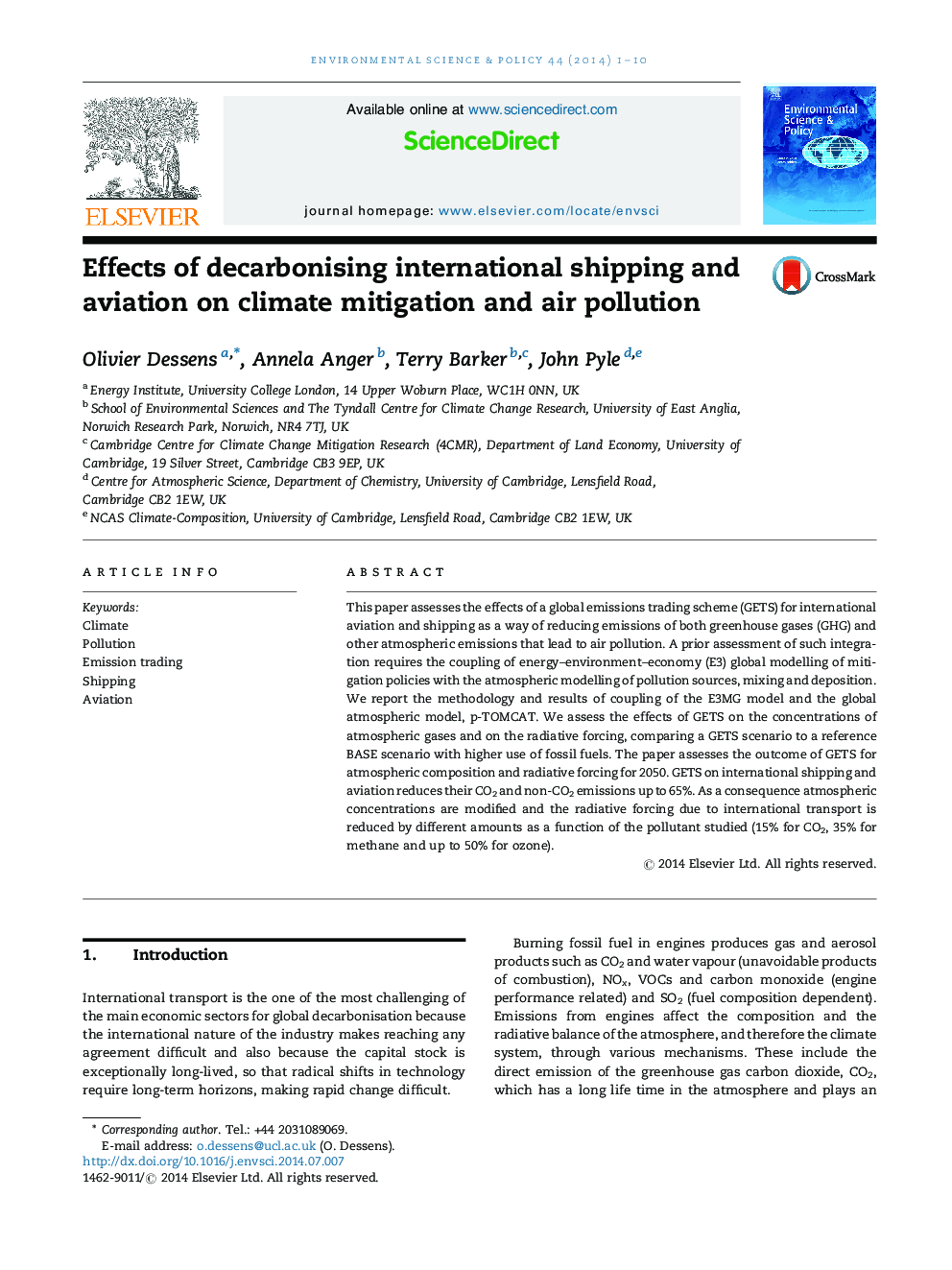| Article ID | Journal | Published Year | Pages | File Type |
|---|---|---|---|---|
| 7467606 | Environmental Science & Policy | 2014 | 10 Pages |
Abstract
This paper assesses the effects of a global emissions trading scheme (GETS) for international aviation and shipping as a way of reducing emissions of both greenhouse gases (GHG) and other atmospheric emissions that lead to air pollution. A prior assessment of such integration requires the coupling of energy-environment-economy (E3) global modelling of mitigation policies with the atmospheric modelling of pollution sources, mixing and deposition. We report the methodology and results of coupling of the E3MG model and the global atmospheric model, p-TOMCAT. We assess the effects of GETS on the concentrations of atmospheric gases and on the radiative forcing, comparing a GETS scenario to a reference BASE scenario with higher use of fossil fuels. The paper assesses the outcome of GETS for atmospheric composition and radiative forcing for 2050. GETS on international shipping and aviation reduces their CO2 and non-CO2 emissions up to 65%. As a consequence atmospheric concentrations are modified and the radiative forcing due to international transport is reduced by different amounts as a function of the pollutant studied (15% for CO2, 35% for methane and up to 50% for ozone).
Related Topics
Physical Sciences and Engineering
Energy
Renewable Energy, Sustainability and the Environment
Authors
Olivier Dessens, Annela Anger, Terry Barker, John Pyle,
